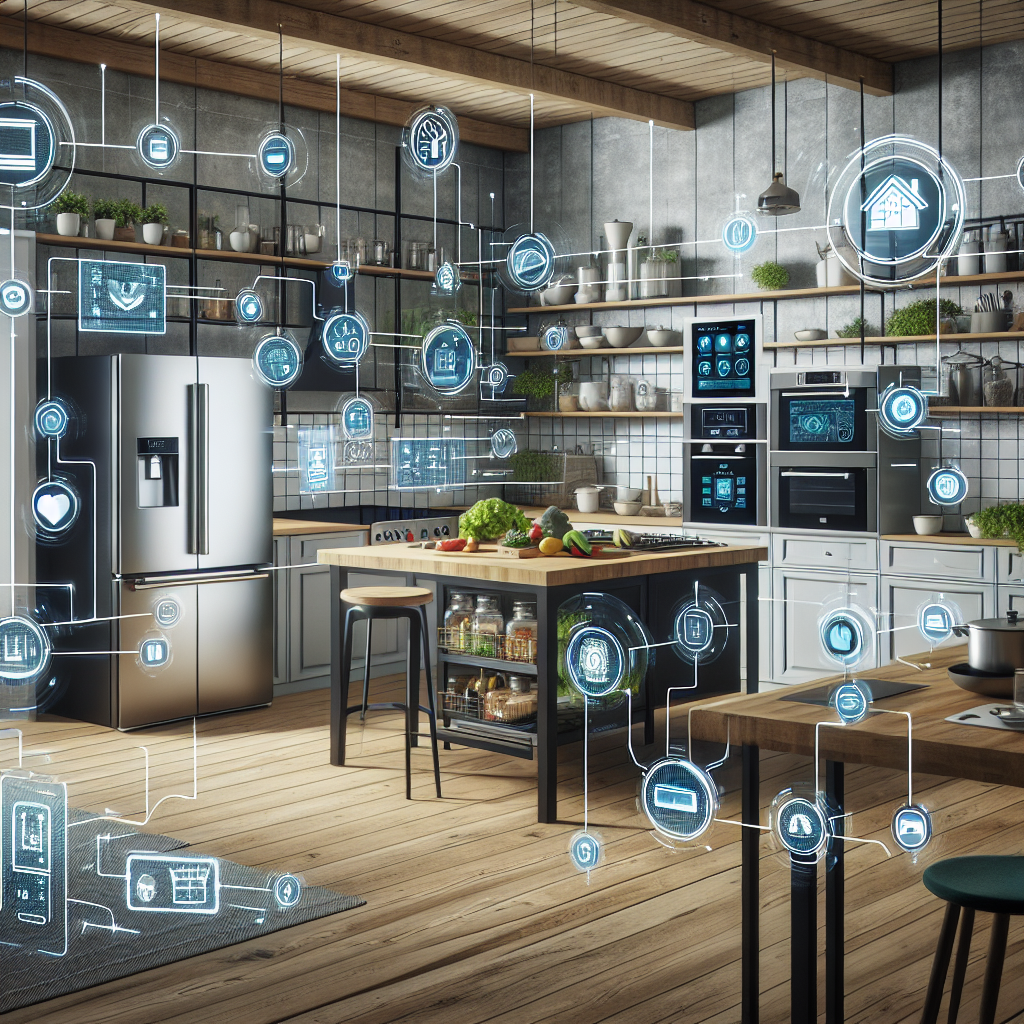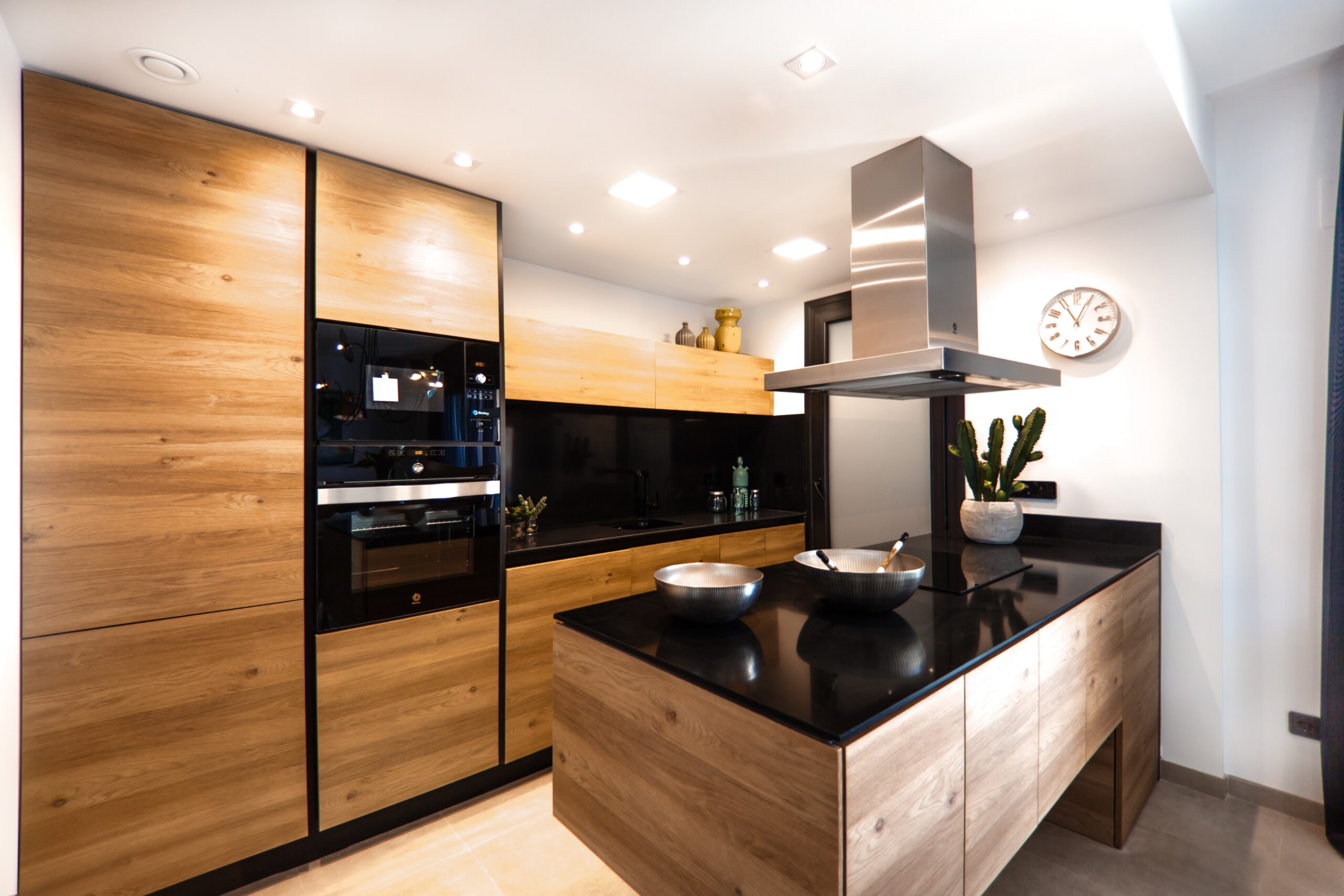Imagine a home where the kitchen seamlessly orchestrates a symphony of smart devices, providing you with the ultimate culinary experience. From voice-controlled appliances to smart refrigerators that automatically restock your groceries, the possibilities are endless. In this article, we will explore the key steps you need to take to create a connected and efficient smart kitchen ecosystem that will revolutionize your cooking routine. Say goodbye to mundane tasks and hello to a world of culinary convenience at your fingertips. Get ready to embark on a journey that will transform your kitchen into the future of cooking.
Choosing the Right Appliances
When it comes to creating a smart kitchen ecosystem, one of the first steps is choosing the right appliances. These appliances should not only be functional and efficient but also smart and compatible with the rest of your ecosystem. Smart appliances offer a wide range of features and connectivity options that can greatly enhance your kitchen experience.
Selecting smart appliances
When selecting smart appliances, consider the features that are most important to you. Do you want a refrigerator that can keep track of your groceries and suggest recipes based on what you have? Or maybe an oven that can be controlled remotely so you can start preheating while you’re on your way home? Take the time to research and compare different brands and models to find the ones that best fit your needs.
Choosing appliances compatible with your ecosystem
To ensure that all your smart appliances work seamlessly together, it’s important to choose appliances that are compatible with your ecosystem. This means ensuring that they are able to connect and communicate with each other. Many smart appliances use protocols such as Wi-Fi or Bluetooth to connect to your home network, so make sure that your chosen appliances support these technologies.
Considerations for energy efficiency
In addition to being smart and compatible, it’s also important to consider the energy efficiency of your appliances. Energy-efficient appliances not only help reduce your carbon footprint but can also save you money on your utility bills. Look for appliances that are ENERGY STAR certified, as they meet strict energy efficiency requirements and can help you create a more sustainable and eco-friendly kitchen.
Creating a Smart Hub
A smart hub serves as the command center for your smart kitchen ecosystem, allowing you to control and manage all your connected devices from one central location. There are a variety of smart hub options available, each with its own features and capabilities.
Exploring different smart hub options
When it comes to smart hubs, there are many different options to choose from. Some popular choices include smart speakers with built-in hub capabilities, dedicated smart hub devices, or even smart displays that can serve as a hub and provide additional functionality. Take the time to research and compare different options to find the one that best suits your needs and budget.
Choosing the right hub for your needs
When choosing a smart hub, consider the features and capabilities that are most important to you. Do you want a hub that can integrate with voice assistants, provide advanced automation options, or have a user-friendly interface? Think about how you plan to use your smart hub and what features would enhance your kitchen experience.
Connecting your appliances to the hub
Once you have chosen a smart hub, it’s time to connect your appliances to the hub. Most smart appliances can be connected to a hub using either Wi-Fi or Bluetooth. Follow the instructions provided by your appliance’s manufacturer to connect them to the hub. Once connected, you’ll be able to control and manage your appliances from the hub’s interface or through voice commands if the hub supports voice control.
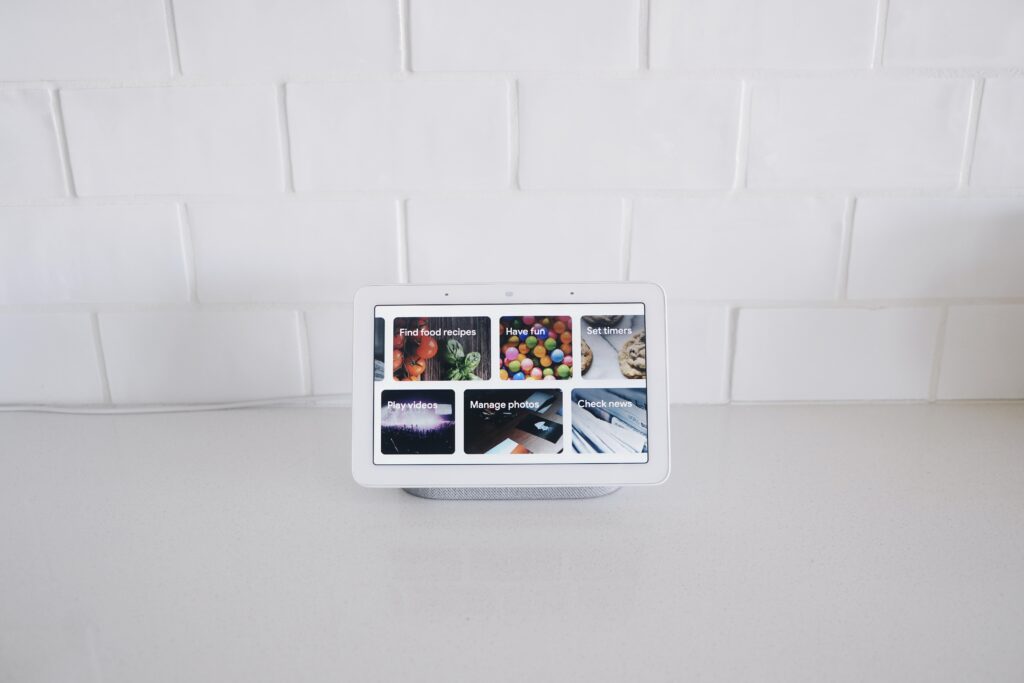
Implementing Voice Control
One of the most convenient features of a smart kitchen ecosystem is voice control. With voice control, you can perform various kitchen tasks without even lifting a finger. There are several voice control options available, each with its own set of features.
Exploring voice control options
When it comes to voice control, the most popular option is to use a voice assistant such as Amazon Alexa or Google Assistant. These voice assistants can be integrated with your smart hub and allow you to control your appliances using simple voice commands. Additionally, some appliances come with built-in voice control capabilities, allowing you to control them directly using voice commands.
Integrating voice assistants
To integrate a voice assistant with your smart kitchen ecosystem, you’ll need to follow the specific instructions provided by the voice assistant’s manufacturer. Typically, this involves connecting the voice assistant to your smart hub and enabling the necessary skills or features. Once integrated, you’ll be able to control your appliances using voice commands, such as “Alexa, preheat the oven to 375 degrees”.
Setting up voice commands for kitchen tasks
To make the most of voice control in your kitchen, take the time to set up voice commands for common kitchen tasks. For example, you can create a voice command to start the coffee maker in the morning, turn on the lights, and preheat the oven for breakfast. By setting up custom voice commands, you can streamline your kitchen routines and make your smart kitchen even more efficient.
Building a Network
A strong and reliable network is essential for a connected smart kitchen ecosystem. It ensures that your devices can communicate with each other seamlessly and without interruptions. There are a few key considerations when it comes to building a network for your smart kitchen.
Ensuring a strong Wi-Fi signal
The first step in building a network for your smart kitchen is ensuring a strong Wi-Fi signal. Smart appliances and devices rely on a stable and fast internet connection to function properly. To ensure a strong Wi-Fi signal in your kitchen, consider placing your router in a central location or using Wi-Fi extenders to boost the signal strength.
Setting up a dedicated network for smart devices
To optimize the performance of your smart kitchen devices, consider setting up a dedicated network specifically for them. This separate network can help reduce congestion and interference from other devices on your main network, ensuring that your smart devices can communicate with each other efficiently.
Securing your network and devices
With the increased connectivity of smart appliances and devices, it’s important to prioritize network and device security. Make sure to secure your network with a strong password and enable encryption. Additionally, keep your devices up to date with the latest firmware and regularly check for security updates. Following these security best practices will help protect your smart kitchen ecosystem from potential threats.
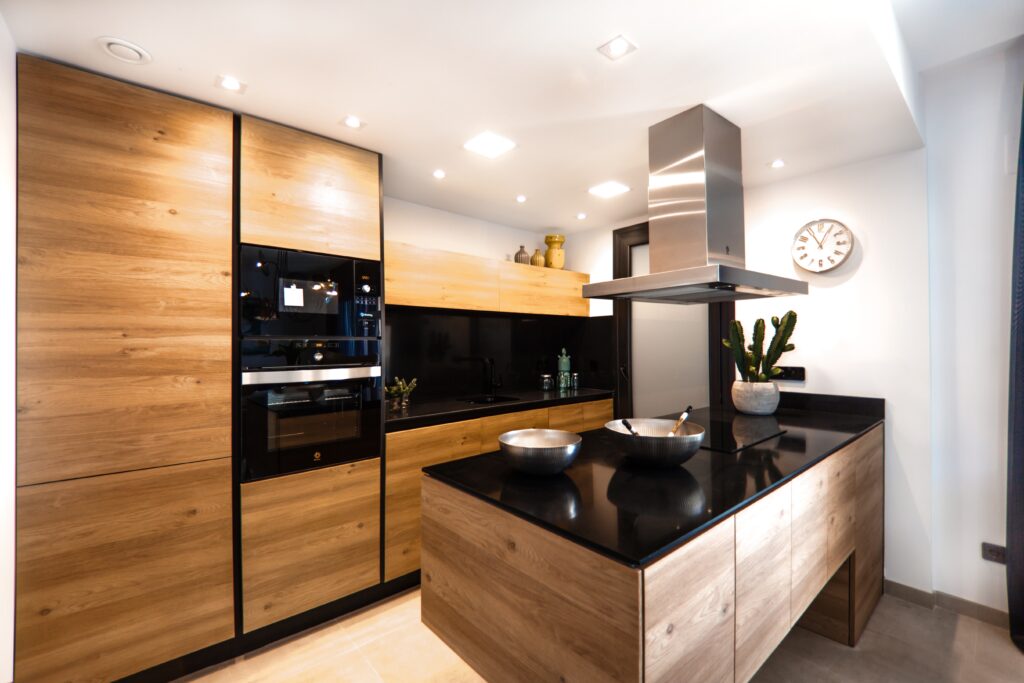
Utilizing IoT Sensors
IoT sensors play a crucial role in creating a connected and efficient smart kitchen ecosystem. These sensors can provide valuable data about your kitchen environment, allowing you to monitor and optimize various aspects of your kitchen.
Understanding the role of IoT sensors
IoT sensors are small devices that are capable of collecting and transmitting data. In a smart kitchen ecosystem, these sensors can monitor various parameters such as temperature, humidity, and even food storage conditions. This data can then be used to make informed decisions and optimize your kitchen environment.
Implementing sensors for temperature, humidity, and food storage
To leverage the full potential of IoT sensors, consider implementing sensors for temperature, humidity, and food storage. Temperature sensors can help ensure that your refrigerator and freezer are maintaining the correct temperatures, while humidity sensors can help prevent mold and moisture issues. Additionally, food storage sensors can help you keep track of food expiration dates and minimize food waste.
Monitoring energy consumption with IoT sensors
In addition to environmental monitoring, IoT sensors can also help you monitor and optimize energy consumption in your smart kitchen. By tracking the energy usage of your appliances, you can identify inefficient appliances and adjust your energy usage accordingly. This not only helps reduce your carbon footprint but can also save you money on your energy bills.
Integrating Smart Lighting
Smart lighting can greatly enhance the ambiance and functionality of your smart kitchen. With smart lighting options, you can create custom lighting routines, adjust lighting based on time of day and activities, and even control your lights remotely.
Choosing smart lighting options
When it comes to smart lighting, there are several options available. You can choose from smart light bulbs, smart light switches, or even smart LED strips. Consider the features that are most important to you, such as color-changing capabilities, dimming options, or compatibility with your smart hub and voice assistant.
Setting up automated lighting routines
One of the key benefits of smart lighting is the ability to set up automated lighting routines. These routines can be customized to turn on and off lights at specific times or trigger based on certain events. For example, you can set up a routine to automatically turn on the kitchen lights when you enter the room or gradually dim the lights in the evening to create a relaxing atmosphere.
Adjusting lighting based on time of day and activities
In addition to automated lighting routines, smart lighting allows you to adjust lighting based on the time of day and your activities. For example, you can program your lights to gradually increase in brightness in the morning to help you wake up, or change to a warm and dim setting in the evening to create a cozy atmosphere. By adjusting lighting based on your needs, you can enhance both functionality and comfort in your smart kitchen.
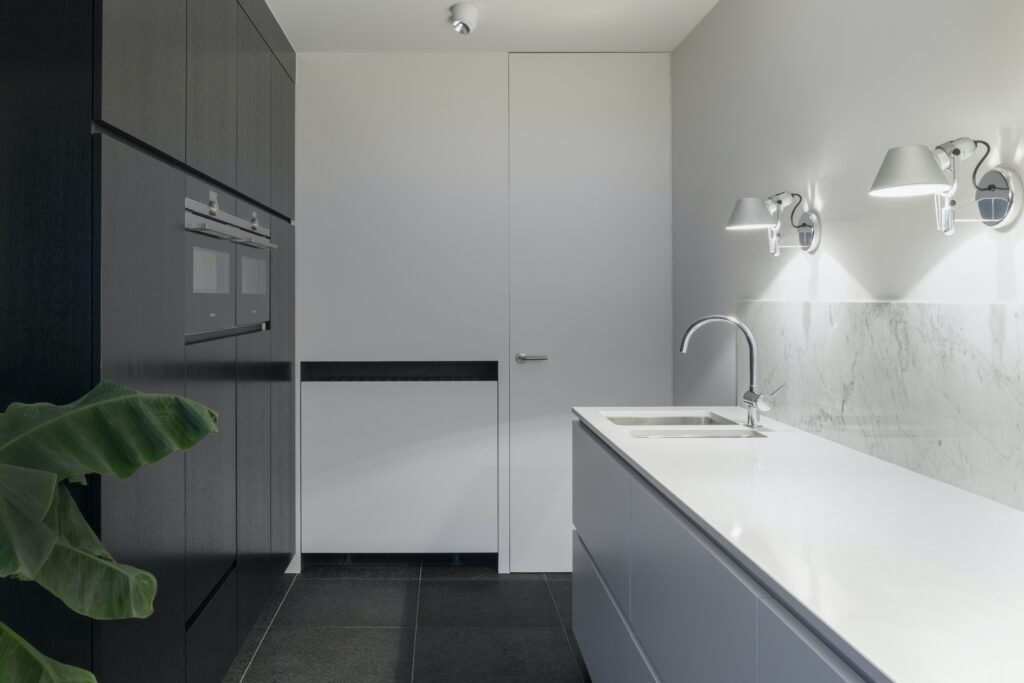
Optimizing Food Management
Managing food in your kitchen can be a challenging task, but with smart solutions, it can be made much easier and more efficient. From smart refrigerators to inventory management apps, there are several ways to optimize food management in your smart kitchen.
Implementing smart refrigerator solutions
Smart refrigerators are equipped with advanced features that can help you manage your food more effectively. These features include inventory tracking, expiration date notifications, and even recipe suggestions based on the ingredients you have. By implementing a smart refrigerator solution, you can reduce food waste, save money, and streamline your kitchen routines.
Using inventory management apps
In addition to smart refrigerators, there are also inventory management apps available that can help you keep track of your groceries. These apps allow you to create shopping lists, scan barcodes to add items, and receive notifications when items are running low or nearing their expiration dates. By using an inventory management app, you can ensure that you always have the necessary ingredients on hand and minimize food waste.
Minimizing food waste with smart expiry trackers
Smart expiry trackers are another useful tool for minimizing food waste in your smart kitchen. These trackers can be placed on food containers or packages and provide real-time information about the expiration dates. They can also send notifications when items are about to expire, helping you plan your meals and use up ingredients before they go bad.
Automating Cooking Tasks
Cooking can be a time-consuming task, but with smart appliances and automation features, it can be made much more convenient and efficient. Explore the following options to automate your cooking tasks and save time in the kitchen.
Exploring smart cooking appliances
When it comes to smart cooking appliances, there are several options available. From smart ovens that can be controlled remotely to smart sous vide devices that ensure precise cooking temperatures, these appliances can greatly simplify your cooking process. Take the time to research and choose the smart cooking appliances that align with your culinary preferences and needs.
Setting up pre-programmed cooking routines
Pre-programmed cooking routines are a convenient feature of smart cooking appliances. These routines allow you to specify cooking settings, such as temperature and cooking time, and save them for future use. For example, you can set up a routine for baking your favorite cookies that automatically preheats the oven to the correct temperature and sets the cooking time. By setting up pre-programmed cooking routines, you can save time and ensure consistent results.
Using remote control features for convenience
Remote control features are another useful aspect of smart cooking appliances. With remote control, you can start preheating your oven on your way home, check the status of your slow cooker from another room, or adjust the temperature of your sous vide device while you’re busy with other tasks. By using the remote control features of your smart cooking appliances, you can have more control and flexibility in your kitchen.
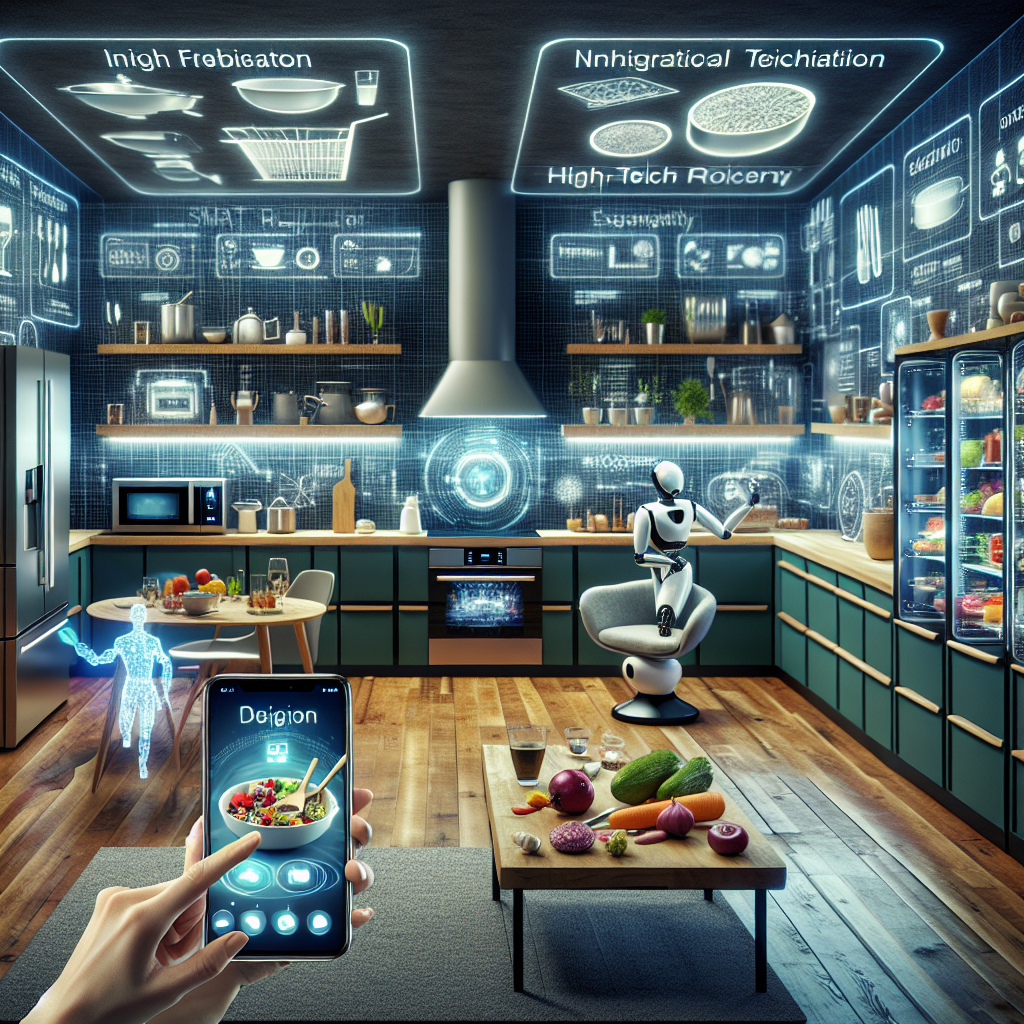
Enhancing Safety and Security
Safety and security are important considerations in any kitchen, and a smart kitchen ecosystem can offer additional features to enhance both. From smart smoke and carbon monoxide detectors to in-kitchen monitoring with smart security cameras, there are several ways to enhance safety and security in your smart kitchen.
Installing smart smoke and carbon monoxide detectors
Smart smoke and carbon monoxide detectors offer advanced features compared to traditional detectors. These detectors can send real-time notifications to your smartphone if smoke or carbon monoxide is detected, even when you’re not at home. Additionally, some smart detectors can integrate with your smart lighting system and flash lights in case of an emergency, providing additional visual cues.
Using smart security cameras for in-kitchen monitoring
Smart security cameras can be used to monitor your kitchen and provide an extra layer of security. These cameras can be accessed remotely from your smartphone, allowing you to check on your kitchen when you’re away. Some smart security cameras also offer additional features such as motion detection and two-way audio, providing peace of mind and allowing you to communicate with family members or pets in the kitchen.
Implementing smart locks and alarms
Smart locks and alarms are additional security features that can be integrated into your smart kitchen ecosystem. Smart locks allow you to control access to your kitchen, such as providing temporary access codes for housekeepers or delivery personnel. Smart alarms, on the other hand, can be used to deter intruders or alert you in case of a break-in. By implementing smart locks and alarms, you can enhance the security of your kitchen and home.
Customizing and Expanding Your Ecosystem
Once you have the foundation of your smart kitchen ecosystem in place, you can begin customizing and expanding it to suit your needs and preferences. There are several ways to do this, from exploring additional smart kitchen devices and accessories to integrating your ecosystem with other smart home systems.
Exploring additional smart kitchen devices and accessories
There is a wide range of additional smart kitchen devices and accessories available that can further enhance your smart kitchen experience. These devices include smart coffee makers, smart scales, and even smart herb gardens. Consider your personal preferences and cooking habits when exploring additional smart kitchen devices to find the ones that will truly elevate your kitchen experience.
Integrating your ecosystem with other smart home systems
If you already have a smart home ecosystem in place, you can integrate your smart kitchen ecosystem with it to create a seamless and interconnected experience. This integration can allow you to control and manage your smart kitchen devices through your existing smart home hub or voice assistant. For example, you can create automation routines that turn on the kitchen lights and start the coffee maker when you wake up in the morning.
Personalizing settings and automations
Finally, don’t forget to personalize the settings and automations in your smart kitchen ecosystem to suit your preferences. Whether it’s adjusting the lighting levels, creating custom voice commands, or fine-tuning the temperature settings on your smart appliances, personalizing your ecosystem allows you to tailor it to your specific needs and make it truly your own.
In conclusion, creating a connected and efficient smart kitchen ecosystem requires careful consideration of appliances, hubs, voice control options, networking, sensors, lighting, food management, cooking tasks, safety, and customization. By selecting the right appliances, implementing the right technology, and optimizing your kitchen routines, you can transform your kitchen into a smart, efficient, and enjoyable space for cooking and dining.
